Tanto Guide: Essential Information for First-Time Buyers
The Tanto typically measures between 15 and 30 centimeters in length, or roughly 1 Shaku in traditional Japanese measurement.
This compact size sets it apart from longer blades like the Katana or Wakizashi. Due to its shorter length, the Tanto was easy for Samurai warriors to conceal within their clothing, making it ideal for close combat and self-defense.
Historically, the Tanto served as the Shoto, or small sword, in the Daisho pairing with the Tachi. Over time, the Wakizashi gradually replaced the Tanto as the preferred auxiliary sword.
Although the standard size of a Tanto falls between 15 and 30 centimeters, the design has undergone many changes throughout history.
Some Tantos broke away from the traditional size and were known as Sunobi-Tanto or O-Tanto. These larger versions had blades around 13 to 14 inches long.
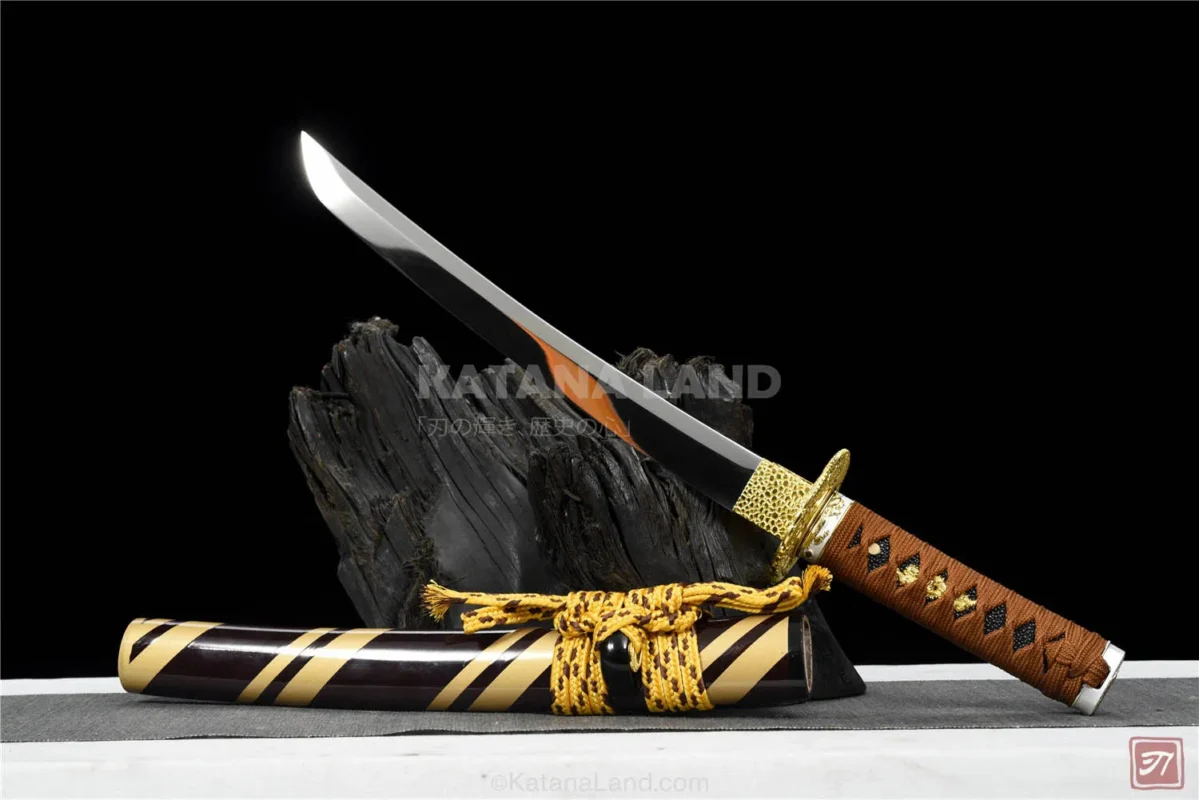
Types of Tanto
Tanto knives come in a variety of styles, reflecting changes in their use, design, and purpose over the centuries.
Traditional Tanto
Traditional Tantos often have a hira-zukuri (flat blade) design, lacking a ridge line, which gives the blade a clean, sharp appearance. Samurai carried these blades as a secondary weapon, concealed within their clothing for self-defense or as a tool for precise strikes.
O-Tanto or Sunobi Tanto
The O-Tanto, also known as the Sunobi Tanto, emerged as a larger variation of the traditional blade. With lengths reaching 13 to 14 inches, these Tantos were almost as long as the Ko-Wakizashi (shorter Wakizashi). The O-Tanto retains the signature Tanto shape but offers a longer blade for greater versatility. This design made it suitable for a wider range of combat situations.
Kaiken
The Kaiken is a small, dagger-like variation of the Tanto traditionally carried by women. It served both practical and ceremonial purposes. Kaiken blades are smaller and slimmer than typical Tantos, often measuring 15–20 cm. They are usually very simple in design, focusing on functionality rather than decoration. Women used Kaiken as a self-defense weapon, often carrying it concealed within their obi (kimono sash).
Aikuchi Tanto
Without the tsuba, the handle and blade flow seamlessly into each other, giving the knife a compact and elegant look. The Aikuchi is often decorated with intricate lacquer or carvings on the scabbard.
Are Tanto Blades Legal
In most places, it’s completely fine to own a Tanto, especially if you’re keeping it at home or adding it to your collection. However, laws can get tricky when it comes to carrying one in public. Some regions have strict rules about blade length, the type of knife, or whether it’s concealed.
In some countries or states, knives with blades over a certain length might require special permits, while others might outright ban carrying knives in public unless you have a specific reason, like for work or outdoor activities.
The best thing you can do is check your local laws to avoid any issues. If you’re unsure, contact your local law enforcement or do a quick online search.
Is Hard to Sharpen the Tanto
Sharpening a tanto isn’t as hard as it seems.
The blade has two distinct edges: the straight cutting edge and the angled tip. Each requires attention to keep the Tanto’s sharpness and original design intact.
What You’ll Need:
- A sharpening stone (start with coarse grit and finish with fine grit)
- Honing oil (optional, depending on your stone type)
- A steady work surface
- A soft cloth for cleaning
Quick Sharpening Guide:
Prepare the Stone: Soak wet stones or oil oil stones.
Sharpen Straight Edge: Hold at 20–30°, push forward with light pressure, and repeat until you feel a burr.
Sharpen the Tip: Lay the tip flat, use short strokes, and avoid rounding it.
Polish: Use a fine-grit stone to smooth and sharpen.
Finish Up: Test sharpness, clean the blade, oil it, and store it safely.
Tanto For Sale
At KatanaLand, we make sure every Tanto is built with top-quality materials so it’s not just sharp but also stunning to look at.
Most of our blades are crafted from high-carbon steel. Some even feature Damascus steel—famous for its strength and those beautiful, wavy patterns. For modern styles, we use stainless steel, which is great for resisting rust and keeping the blade in perfect shape over time.
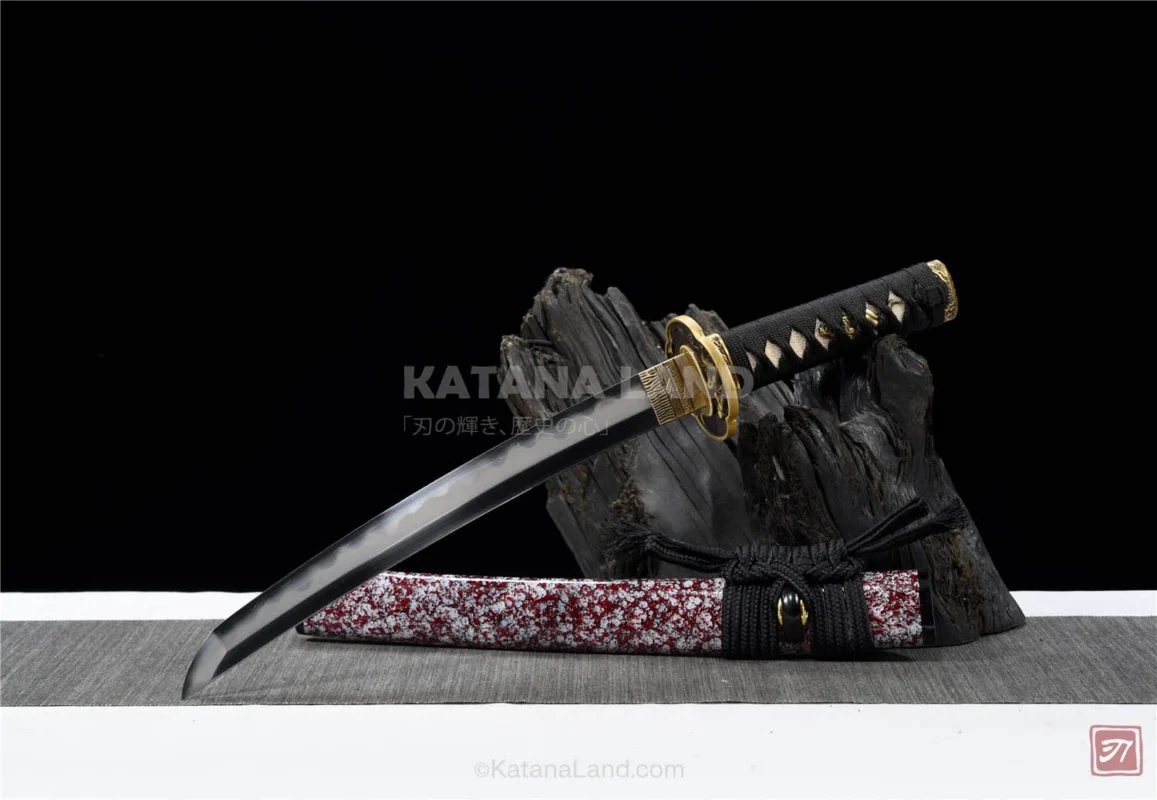
We make sure the handles are just as impressive as the blades. Traditional options like ray skin offer a firm, classic grip, while hardwood gives a natural feel. For a more modern touch, lightweight and durable materials like T10 or Wootz steel are also available. And, of course, the scabbards are crafted with care—whether it’s lacquered wood for a traditional finish or sturdy polymer for practical use.
FAQs
What is the tanto sword used for?
The tanto was traditionally used for close-combat stabbing and thrusting. Its compact design made it a practical secondary weapon for samurai, especially in tight spaces. Beyond combat, the tanto was also a ceremonial weapon, sometimes used in seppuku rituals as a mark of honor.
What is the difference between tanto and wakizashi?
The tanto is smaller and dagger-like, suited for stabbing and piercing. In contrast, the wakizashi is a short sword, longer than the tanto, with a slight curve, making it better for slashing. The wakizashi was paired with the katana, while the tanto served as a secondary or backup blade.
What is the difference between a katana and a tanto?
The katana is a long, curved sword designed for slashing and quick-draw techniques, worn edge-up. The tanto is a smaller, straight-edged dagger used for close combat and stabbing. Both served different combat roles, with the katana as the primary weapon and the tanto as a backup.
Is a tanto blade good for self-defense?
A tanto blade is well-suited for self-defense, especially in close quarters. Its sharp, pointed tip and compact size allow for effective thrusting and precise strikes. However, carrying it depends on local laws, so it’s best to check regulations on blade types for self-defense use.
Tanto Knives by KatanaLand.com
-
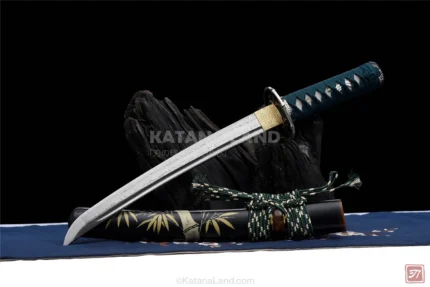 Ayakaze Take Tanto$610.00
Ayakaze Take Tanto$610.00 -
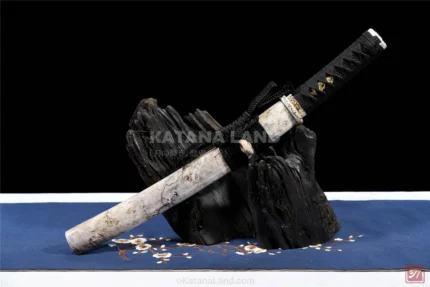 Fuyin no Ken Tanto$340.00
Fuyin no Ken Tanto$340.00 -
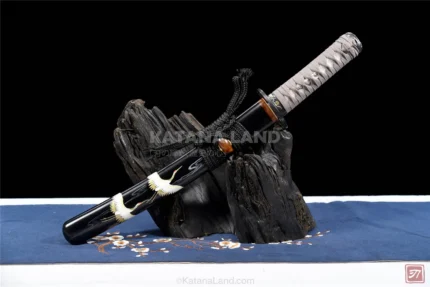 Crane Blade Tanto$840.00
Crane Blade Tanto$840.00 -
 Kinjuno Tachi$360.00
Kinjuno Tachi$360.00 -
 Kanjo no Ken Tanto$420.00
Kanjo no Ken Tanto$420.00 -
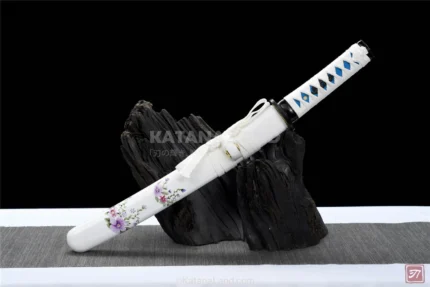 Aoi no Yume Tanto$290.00
Aoi no Yume Tanto$290.00 -
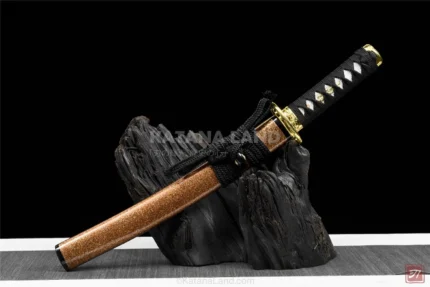 Golden Dragon Musashi Tanto$320.00
Golden Dragon Musashi Tanto$320.00 -
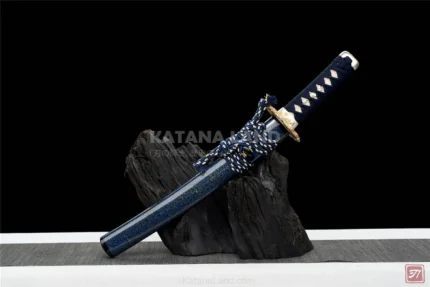 Aoi Lotus Tanto$940.00
Aoi Lotus Tanto$940.00 -
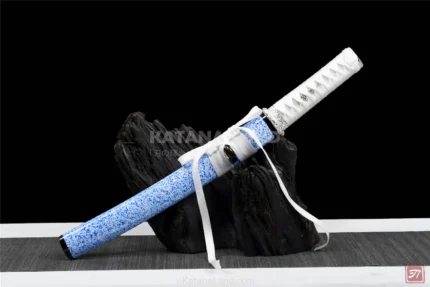 Aoi Kaze Tanto$290.00
Aoi Kaze Tanto$290.00 -
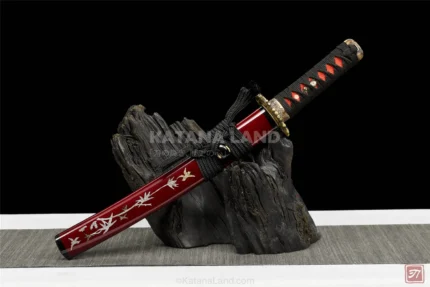 Bamboo Tanto$350.00
Bamboo Tanto$350.00 -
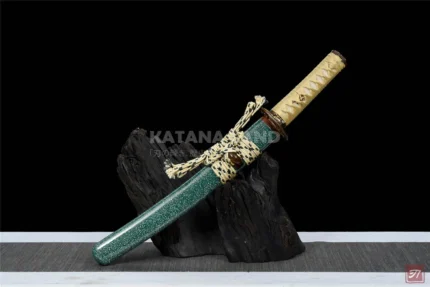 Echigawa no Tsurugi Tanto$780.00
Echigawa no Tsurugi Tanto$780.00 -
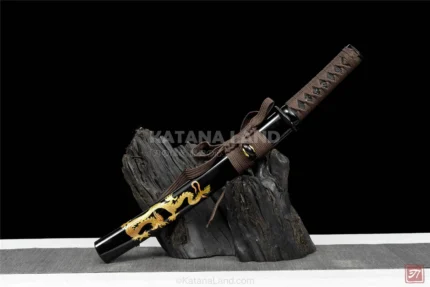 Aqua Ryujin Tanto$320.00
Aqua Ryujin Tanto$320.00 -
 Crimson Dragon Tanto$300.00
Crimson Dragon Tanto$300.00 -
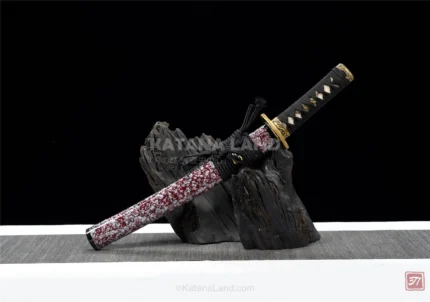 Amethyst Skyblade Tanto$730.00
Amethyst Skyblade Tanto$730.00 -
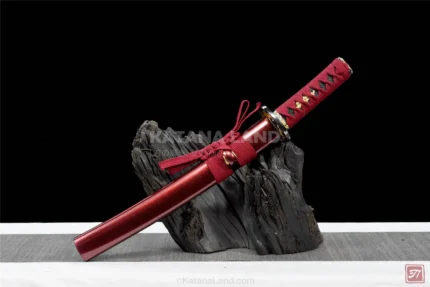 Crimson Plum Blade Tanto$310.00
Crimson Plum Blade Tanto$310.00
